Shannon V. OKeets
Posts: 22095
Joined: 5/19/2005
From: Honolulu, Hawaii
Status: offline

|
Here is my merger of the writeups by Mike and Christopher on HQs and Armor.
====
3.4.5 Using HQs and Armor
The two most important land units in MWiF are headquarters units (HQs) and Armor units (Armor or ARM). Using them properly is a key to playing well, or at least to avoid playing poorly. With proper use of HQs and armor, supported by other land, air, and navy units, you can control the pace of the game.
3.4.5.1 HQs
HQs can be used for supply, for reorganization, in combat, and even to debark units from naval transports that are at sea. With planning, HQs can commonly perform two of these roles, but rarely all four. Using the special capabilities of HQs in MWIF means making trade-offs between these competing and conflicting demands.
HQs Supply Role
Supplying front line units
As a cursory examination of the supply rules shows (see RAC section 2.4), HQs are vital as secondary supply sources for other units. Unless you are fighting in, or very near, your home country, you need to have an HQ within a few hexes of land and air units in order for those units to operate at full effectiveness. Thus you want your HQs to keep up with advancing (or retreating) front-line combat units.
On the attack, once your armies have pushed beyond your home country's borders and the capital cities of your aligned and conquered minors, they require HQs to remain in supply. This is particularly true once bad weather strikes and the length of the basic supply path drops from 4 hexes to 3 hexes (in snow), and even down to 2 hexes (in rain, storm and blizzard). To press forward for the whole turn, even in bad weather, your units cannot afford to outrun your HQs.
When defending, there often are stretches of the front that are too far from your cities, especially in bad weather. HQs are vital to keep units in supply in those sectors, or your units face obliteration once your opponent disorganizes them. Units out of supply and disorganized defend with a strength of 3 at best and usually just 1.
For both attacking and defending major powers, HQs are also vital to maintain supply in overseas theaters, especially if supply lines stretch inland. In particular, if you are engaged in, or launching, a major overseas offensive (such as the Japanese in China or the Allies invading France late in the game), HQs are essential for pressing an offensive deeper inland.
As a general rule, in each theater of operations you should have at least one HQ reserved exclusively for providing supply to your forces; it performs no other HQ function until very late in the turn (i.e. once the chance the turn will end is 30% or better). That’s because the other uses of HQs can cause them to be disorganized, which halts your advance or forces you to defend a disorganized HQ under unfavorable conditions. HQs with low reorganization values are ideal candidates for providing supply, since they are generally inept at any of the other HQ functions.
Emergency supply (an optional rule, see RAC section 2.4.3)
It may happen that part of your army becomes trapped out of supply with an accompanying HQ. If your HQ is organized, you have the option of using emergency HQ supply to restore supply to as many units as the HQ's reorganization value.
If you are on the phasing side, you can use emergency HQ supply to get: (1) air units to ground-strike key enemy forces (such as the land units coming to destroy your out-of-supply troops) or (2) land units back in supply to launch an attack. This is particularly useful if your spearhead has been encircled (à la Stalingrad) and you want to break out of the pocket.
If you are on the non-phasing side, you might need to provide emergency HQ supply to fighters to defend against enemy air missions, or to put disorganized units back in supply, increasing their combat strength and hence their survivability in the face of enemy attacks.
In general, if you can hold your position without using emergency HQ supply, it is better to do so for as long as possible. Consider emergency supply as a last resort tactic.
Supply units (an optional rule, see RAC section 22.4.10)
An often-overlooked use of HQs as a supply source is to pair them up with supply units. Supply units, when stacked with an HQ, can be expended (i.e., poof! they’re gone) to make that HQ a primary supply source for the remainder of the turn (not just for the impulse, for the whole turn).
An HQ so used can keep an offensive going or help hold a key defensive sector through an entire turn even if supply is unreliable due to contested sea areas, immense logistical distances, or a lack of a rail network. For example, during a long turn you can send a force through a wide expanse of desert (such as the desert region in Syria, Jordan and Iraq) without any trouble, if it is accompanied by an HQ empowered by the expenditure of a supply unit.
Perhaps the best uses of supply units are during Axis campaigns in the United Kingdom or the Allied invasion of France. In both cases, the invading armies must contend with the possibility that a well-planned maritime defence (led by the Royal Navy in the first case and formidable Axis naval air power in the second) will cut their overseas supply lines. If supply units are in use, HQs already in theatre can consume a supply unit and allow the campaign to press forward without being ground to a complete halt due to such interruptions.
To get the most out of your supply unit, use it at the beginning of a turn.
HQs Reorganization Role
When to use HQs to reorganize
At various points during an impulse, your land, air and naval units may become disorganized and immobile for the rest of the turn. The reorganization capacity of an HQ can let disorganized units move and fight again. However, if you use an HQ to reorganize units, that HQ becomes disorganized, and can no longer move to keep up with your advancing (or retreating) front-line units in order to provide them with supply.
Generally, an appropriate time to reorganize units is when the type of action you have taken (e.g., land) corresponds with the type of unit to be reorganized, to maximize the efficiency of your HQ.
Be wary though, when on the strategic defensive, you cannot reorganize HQs during the turn unless you expend an offensive chit (only possible during the Action Choice phase and when you are on the phasing side). If the turn goes on too long and the attackers are successful at pushing forward, you could find your HQ is in the front lines and under heavy assault.
Land unit reorganization
Most often, you use HQs to reorganize land units after a failed land attack, so that your offensives can continue. They can also be used to reorganize key reinforcements that have arrived by rail or units that have been disorganized by enemy action (ground struck or forced to retreat).
Air unit reorganization
You usually reorganize air units after a series of ground strikes or strategic air raids, in order to be able to continue to launch those sorts of air missions later in the turn. For the CW and US, having one HQ each dedicated to keeping their mighty late-game air forces organized is often a good idea (especially in conjunction with offensive chit-boosted air actions). You also occasionally need to reorganize fighters to maintain or contest control of the skies.
Naval unit reorganization
Naval units are reorganized much less often during a turn than land or air units, due to the mechanics by which naval units operate at sea. However, if you have spare reorganization capacity, your HQs can reorganize: (1) combat ships, submarines, and carriers that have been aborted from sea, so they can return to the fight, (2) sea-lift units that have shuttled in reinforcements from overseas, so they can be used to carry units again (including to invade with), or (3) convoys, when you have just suffered a major blow to your convoy lines or are undertaking a massive re-adjustment.
Alternative means of reorganization
As you can see from the reorganization rules, air and naval transports can also be used to reorganize units. Any of those units that are not otherwise committed should be used to reorganize units, thereby saving HQs for other tasks. Keep in mind that air transports require spare air missions to reorganize units.
HQs Combat Role
HQ support
If you are using the optional HQ support rule , HQs can provide a direct modification to combat odds, offensively and/or defensively. When playing with the 2d10 combat results chart, HQs used on the attack also help offset the penalties resulting from attacking cities.
It is tempting to throw in HQ support to help boost attacks whenever possible, especially since HQs often have comparable combat factors to regular units. You should avoid this temptation!
Because using an HQ in this manner causes it to become disorganized after the combat is over (whatever the result of the combat), it should only be used on key attacks. If an attack fails anyway despite your use of HQ support, then the HQ and all the other surviving attackers are disorganized, whereas if you had held the HQ out of the attack, it could now reorganize the remaining units so they could resume offensive operations.
HQ combat modifier
As noted above, an HQ helps nullify the penalties applied when attacking cities. This makes HQs useful when assaulting cities that are either encircled and (relatively) easy to capture, or when assaulting a key enemy city (e.g., Leningrad, Paris) where the HQ would be used for HQ support anyway. Attacks on cities with a high probability of resulting in disorganized attackers, and that do not merit HQ support, should probably not include HQ participation, so as to avoid disorganizing the HQ.
HQs and offensive chits
An offensive chit used during a land, air, or naval impulse provides impulse-specific benefits for an individual HQ. Alternatively, during any impulse, regardless of action type, an offensive chit can be used to reorganize all your disorganized HQs. At the start of each turn, when you have one or more offensive chits at your disposal, you should examine how they might be used during the turn and, if applicable, on which HQs they should be used.
When using offensive chits, your best HQ in a theater should be reserved for land actions, and your second best HQ for air actions. For the CW and US, late in the game, the reverse is often true, as they have a limited front and relatively modest armies on land but massive air forces at their disposal. Japan and the US might expend offensive chits on individual HQs during naval actions, since the nature of campaigning in the Pacific does not lend itself to the use of offensive chits during land or air actions.
When your front is advancing rapidly and you do not need the extra 'oomph' provided by offensive chits used on land actions, you can instead engage in a massive reorganization of your forces, using up your HQs, and then reorganize all your HQs on your next impulse with the use of an offensive chit. This is a fearsome capability and allows your offensive to proceed without interruption. If your opponent’s forces have all become disorganized, like yours were prior to this massive reorganization effort, they are immobile targets ripe for the plucking by your newly invigorated troops. This is best done during long summer turns.
HQ Summary
You will have to decide for yourself what the proper balance is between combat support, reorganization, and supply, but some general guidelines for the placement and use of HQs can be given:
• If your opponent has superiority in ground forces, avoid placing an HQ into the front line where it is vulnerable, unless the position is one which you must hold (for example, Gibraltar is often considered the most important hex in the game). By placing an HQ in or adjacent to a critical hex, you can lower your opponent’s chance of taking it; although doing so puts the HQ at risk.
• If your opponent has strong tactical air units, try to place your HQ in a hex beyond his air units’ range and/or in a terrain type that halves tactical air factors. If no such position is available (for example, France lacks “strategic depth” because Paris is so close to the border), assign a fighter or anti-aircraft unit to defend the HQ from air attacks, if possible.
• If you are playing with oil-dependent units, the reorganization of your HQ will burn oil that could have gone to other units, or to your hungry factories. Sometimes, this is a necessary price, but examine the weather report and where you are in the turn. Use of the HQ for reorganization may provide little benefit in poor weather or late in a turn. Weather is unpredictable, but the weather report can give you an idea of probability of poor weather. Poor weather usually shortens the turn while simultaneously reducing the ability of units to move and attack. If the turn is about to end, the reorganization will have been wasted.
If you manage to find the proper balance, your HQs can allow your units a second crack at a key point, or sustain a drive deep into enemy territory. When you do make that drive, you will find that the spearhead will usually be armored units.
3.4.5.2 Armor
Armor units (ARM), in combination with the other blitz units, mechanized (MECH) and (to a lesser extent) motorized (MOT) units, are key to a rapid advance through enemy territory or to a solid defence against enemy advances. They are most often used in the European theater of operations, but can also be useful in the Asia-Pacific theater.
Blitz combat
Under the right circumstances, as long as you have superiority in blitz units (ARM or MECH) in a combat, you can declare a combat to be resolved using the Blitz combat results table (CRT). Typically this results in you taking more territory and keeping your forces organized longer over the course of a turn.
If your opponent has no defending blitz units, any amount of ARM or MECH will allow you to use the blitz CRT. If your opponent has MECH, you must either have some ARM or more MECH. If your opponent is defending with ARM and/or anti-tank guns, you must have more ARM. For example, if your opponent uses two ARM corps and an anti-tank gun to defend a hex, in order to overcome his ARM and call a blitz combat, you must have four ARM corps (or three ARM corps and one division) in on the attack.
Both ARM and MECH are useful to gain blitz bonuses in combat. The bonuses apply when attacking or defending in Fine weather in Clear or Desert hexes, although when attacking you only get the bonus when the blitz CRT is being used. Generally, your blitz units are twice as effective when defending as when attacking.
When playing with the 2d10 combat chart, you should have a MOT unit in pretty much every blitz combat you launch. The Mot unit takes the first loss (if any), because the first loss suffered by the attacker in a blitz combat must always be an ARM, MECH, HQ-A or MOT. If playing with divisions, a MOT division is the cheapest loss to take.
Though some terrain types permit the defender to choose the combat table, the choice is often made by the side with the most armor engaged in the battle (as described in detail above). Whoever chooses the CRT can use that decision to control the pace of the advance. Armor has high movement and combat factors, which in combination, allow an armored force to rapidly push back enemy front lines and possibly breakthrough them. On the defense, having greater armor means you can choose the assault table, thereby preventing breakthroughs and rapid advances by the attacker. Thus, the one with the most armor at the point of decision can determine whether a front is blitzkrieg or sitzkrieg.
Positioning armor
Note where your opponent is massing his armor, and you will have an indication of where his main offensive thrust is going to be, or where he plans to build his strongest defensive line.
Does this mean that you should always strive to have the most armor on all fronts? No. You want control “at the point of decision”. For secondary fronts, or a portion of a front line, or a place where you can afford to fall back, it’s ok to concede the armor advantage to your opponent, in order to gain it elsewhere. Historically, in the summer of 1941, a small fraction of German and British armor was near the English Channel. The two sides considered occupied France secondary, the Germans because they had conquered it and the British because they calculated they were not strong enough to invade. Both sides sent their armor elsewhere to gain an advantage on other fronts.
The high combat factors of armor can tempt you to use them in attacks on enemy cities and mountains. You should only do so if taking the city or mountain hexes is crucial, especially if playing with oil-dependent units. A smart defender will see his chance to disorganize your best armored units and use the assault table, since this prevents breakthrough results. Sometimes, the position is so important (e.g., an Allied attack on Berlin or a USSR counter-attack on Moscow), that using armor is justified. In such cases, you should use it.
A sneaky trick that defenders in land combat can pull is to call a blitz combat even when the attack is in non-blitz terrain, especially if the attacker is using an ARM or HQ-A in the combat. If by doing so the defender can inflict losses, even if the defender is forced to retreat or is shattered, the attacker loses a precious ARM unit instead of a cheap militia or infantry he was expecting to lose. This can happen a lot if the attacker launches low-odds attacks and the defender can afford to give up the hex(es).
Island Defence
Because blitz units are so effective on the defense, they are not used much in the Asia-Pacific regions. Major powers who have to defend Clear terrain island hexes, (Japan especially, the US sometimes, and other powers rarely), often stack an ARM and/or MECH corps in a key island hex (such as Truk). If you are playing Japan and your Commonwealth and American opponents have their marine ARM divisions available (these can invade off transports, and call the blitz CRT when invading), consider putting an anti-tank gun in the hex too, to bolster your defense against invasions.
_____________________________
Steve
Perfection is an elusive goal.
|
 Printable Version
Printable Version







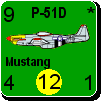


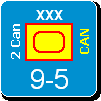
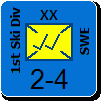
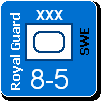



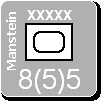
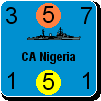
 New Messages
New Messages No New Messages
No New Messages Hot Topic w/ New Messages
Hot Topic w/ New Messages Hot Topic w/o New Messages
Hot Topic w/o New Messages Locked w/ New Messages
Locked w/ New Messages Locked w/o New Messages
Locked w/o New Messages Post New Thread
Post New Thread